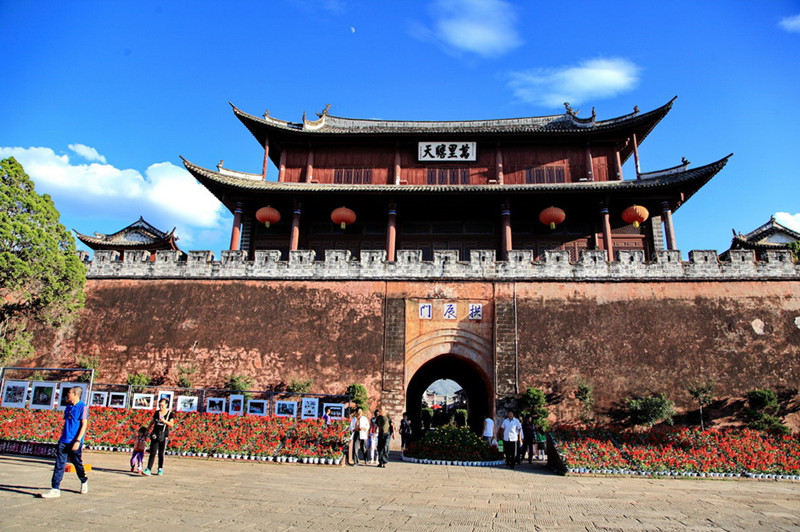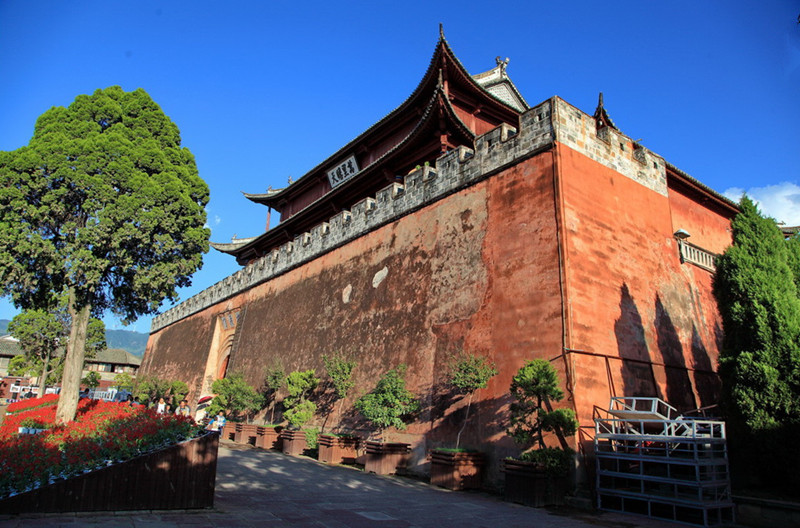Nanzhao Kingdom of Yunnan History
Establishment and Expansion
Origins
The Nanzhao Kingdom (738–902 CE) emerged as an ancient ethnic minority regime in the Yunnan region of China during the 8th century. It was founded by Piluoge, leader of the Mengshe Zhao, in the 26th year of the Tang Kaiyuan era (738 CE).
Consolidation and Territory
At the end of the Sui Dynasty and the beginning of the Tang Dynasty, there were six strong kingdoms in the Erhai Lake area, each ruled by a king, collectively known as the Six Zhaos (Liu Zhao). These included Mengxi Zhao, Yuexi Zhao, Langqiong Zhao, Tangdan Zhao, Shilang Zhao, and Mengshe Zhao. Mengshe Zhao, located south of the others, became known as “Nanzhao.” With Tang Dynasty support in 738 CE, Piluoge of Mengshe Zhao unified the other five Zhaos, establishing Nanzhao’s political dominance over the Erhai Lake region.

Administrative and Cultural Development
Nanzhao relocated its capital to Taihe City. The Tang court granted Piluoge the title of Duke of Yueguo and later “King of Yunnan.” By the year Tianfu 2 (902 CE), descendants of Zheng Hui of the Tang Dynasty overthrew Nanzhao, establishing the “Dachanghe” Kingdom.
Territory
Geographic Extent
Nanzhao encompassed present-day Yunnan, with its capital situated in the Erhai Lake area. The central administrative, social, economic, and cultural hub of Nanzhao was centered around the “Ten Zhaos” (Dian), with Dian including: Yunnan Dian (modern Xiangyun and Binchuan), Pingdan Dian (modern Xiangyun County Town), Baiya Dian (modern Midu Hongya), Zhaochuan Dian (modern Dali Fengyi), Mengshe Dian (modern Weishan), Mengqin Dian (modern Yangbi), Tangchuan Dian (modern Dengchuan), Dahe Dian (also known as Yihe Dian, modern Dali Taihe Village), Jumei Dian (modern Dali Ancient City), and Dali Dian (also known as Shizhao, modern Dali Xizhou).

Expansion and Influence
During its peak, Nanzhao extended east to Guizhou, west to the Irrawaddy River, south to Xishuangbanna, and north to the Dadu River. It bordered Annan to the southeast, Tubo to the northwest, and the Nvwa Kingdom (located in modern-day southern Thailand) to the south.
Cultural and Social Developments
Ethnic Diversity
Nanzhao was home to various ethnic groups such as the Kunming Man, Yunnan Man, Ailao Man, Xierhe Man, and Han, among others. These groups lived together in the same region and interacted extensively in terms of economy, politics, and culture, leading to mutual exchange and assimilation.
Social Practices
The royal family and Buddhists in Nanzhao predominantly practiced cremation, while the Bai Man of Xierhe practiced earth burial. According to the “Manuscript on the Barbarians,” burial customs varied widely among different groups within Nanzhao.

Royal Succession
Lineage of Kings
- First Generation King: Xineluo (617-674 CE), also known as Duluoxiao, son of She Shang. Reign: 649-674 CE.
- Second Generation King: Luosheng (634-712 CE), also known as Luoshengyan, son of Xineluo. Reign: 674-712 CE.
- Third Generation King: Shenglupi (672-728 CE), son of Luosheng. Reign: 712-728 CE.
- Fourth Generation King: Piluoge (697-748 CE), son of Shenglupi. The Tang Dynasty granted Piluoge the name Guiyi. Reign: 728-748 CE.
- Fifth Generation King: Geluofeng (712-778 CE), son of Piluoge. Reign: 748-778 CE.
- Sixth Generation King: Yimuxun (754-808 CE), grandson of Geluofeng, son of Fenggayi. Reign: 778-808 CE.
- Seventh Generation King: Xungequen (777-809 CE), also known as Xinjuequen, son of Yimuxun. Reign: 808-809 CE.
- Eighth Generation King: Quanlongcheng (797-816 CE), son of Xungequen. Reign: 809-816 CE.
- Ninth Generation King: Quanlisheng (801-824 CE), also known as Quanli, brother of Quanlongcheng. Reign: 816-824 CE.
- Tenth Generation King: Quanfengyou (817-859 CE), brother of Quanlisheng. Reign: 824-859 CE.
- Eleventh Generation King: Shilong (843-877 CE), also known as Qiulong, son of Quanfengyou. Reign: 859-877 CE.
- Twelfth Generation King: Longshun (860-897 CE), also known as Fa, son of Shilong. Reign: 877-897 CE.
- Thirteenth Generation King: Shunhuazhen (876-902 CE). Reign: 897-902 CE.
The establishment of Nanzhao was a significant outcome of the social development of southwestern ethnic minorities and other ethnic groups, promoting the development of a unified multi-ethnic country and facilitating economic and cultural exchanges and developments between the Han people and southwestern ethnic minorities.












